Where once the pavements outside a fashion show would be heaving with people, individuals moving to the soundtrack of a thousand cameras clicking, they are now empty, deserted save for a few photographs and those who have chosen to brave the outdoors, mask firmly in place. Of course, there aren’t even very many fashion shows for people to attend, given that the global pandemic has forced the fashion industry to re-evaluate its entire way of working, which includes finding new, often digital modes of showcasing designers’ new collections. What does this mean for street style? Can it still be relevant in the age of social distancing?
Street style has undoubtedly been one of the biggest phenomena to revolutionise the fashion industry. It formed careers, transformed fashion week and infiltrated mainstream media. What began with Bill Cunningham, whose photographs documented people on the streets of New York and were published by the New York Times from 1989 onwards soon became something else altogether. In the mid-2000s, the advent of online media and the ability to self-publish in blog form allowed street style to flourish in a way it hadn’t before – it could reach an audience of millions, all over the world. Individuals like The Sartorialist and Street Peeper made a job out of photographing people they thought looked cool and interesting, while others, like Susie Lau – who began her blog Style Bubble in 2006 – began to document their own outfits alongside other work. But this authentic approach was soon appropriated by the industry at large and ultimately metamorphosed into just another facet of ‘the business’.

‘Early on, I would say many of the street looks at fashion week were more personal and genuine,’ says photographer Jason Jean, who is a regular at fashion week and has an Instagram feed full of beautiful street style images. ‘It was interesting to see how fashion editors, stylists, buyers, and guests were styling their looks; mixing pieces from different brands, old and new.’ It could only be this way for so long, however, before people started dressing up for the camera, using fashion week as an opportunity to express their own personality, their own brand. As Camille Charriere, herself no stranger to street style photographers, says: ‘Street style became the show, it became the event. From the moment it did, people started performing for it. It was used so much I think people lost sense of whether it was really “authentic” or “genuine”. Why was street style inspiring? Because it gives you ideas on how to mix and match things that supposedly you would have in your wardrobe. But the problem is if people are only wearing high-end designer brands or staging high-end shoots, it doesn’t feel natural. I think it was already a little bit tired before the pandemic and now the pandemic has killed it completely – because who’s going to be snapped on the street this season?’

In some ways, Charriere’s thoughts echo those of Suzy Menkes writing for the New York Times' T Magazine in 2013, when she referred to the ‘circus’ of fashion and stated that ‘the people outside fashion shows are more like peacocks than crows. They pose and preen, in their multi-patterned dresses, spidery legs balanced on club-sandwich platform shoes, or in thigh-high boots under sculptured coats blooming with flat flowers.’ Some suggested the bubble had burst, while others were quick to publish their own rebuttals to Menkes’ piece (both Leandra Medine, then of Man Repeller and Susie Lau wrote responses). While perhaps it led to some reflection on the part of those involved in the ‘circus’, it didn’t spell the end of street style – far from it. The medium simply shifted once more, this time away from the outlandish, attention-grabbing ensembles worn by the likes of Anna Dello Russo and Bryanboy, towards a slightly quieter version of dressing. It became about who was wearing the right brands, the most-wanted pieces of any given season. It gave certain designs or even collections increased exposure – think of Rejina Pyo’s Greta dress a few years ago or even the ubiquity of Bottega Veneta’s accessories in the past couple of seasons – which was no longer necessarily about personal style. As brands realised the commercial potential of lending clothes to influencers or even paying someone to wear their creations, street style became just another transaction.

This is not to say it was all bad – after all, it allowed careers to flourish and for people to make money in ways not previously available to them. Photographers like Tommy Ton and Phil Oh – the man behind Street Peeper – became some of the most in-demand names in the industry, as publications fought to secure their talents exclusively over show seasons. Perhaps that’s why Oh, along with Jean, feels more optimistic about the medium. ‘Street style is still relevant and will be more so as we learn to live and adapt in a pandemic,’ Jean says. ‘I’m also interested to see how street looks evolve as sustainability becomes more of a focus.’ On the issue of relevance, Oh’s take is slightly more cutting. ‘I suppose if the industry eventually returns to a fashion week system, and since no vaccine yet exists for voyeurism or vanity, then street-style slideshows will undoubtedly endure to help cater to those very human needs. And to help feed the page-view dependent media outlets that also rely on street-style.’
Another thing street style did was to act as a kind of prologue to our ever-growing obsession with what other ‘normal’ people are wearing, rather than merely looking to models on the catwalk. One only has to look at the subsequent explosion of Instagram and other social media platforms for proof of that fact – we all became willing voyeurs, keen to gain insight into others’ lives. But as street style did gravitate far from its origins, becoming a business opportunity rather than a kind of personal expression, it was absorbed into the fashion industry, which smothered it in the same glossy, somewhat exclusive veneer as could be seen in other aspects of the industry. This meant that the same lack of diversity that plagued fashion’s front covers, catwalks and casting was also present in the world of street style – something on which Lindsay Peoples Wagner, now editor-in-chief of Teen Vogue, wrote in 2018. Writing at the time for The Cut, she asked: ‘Are street-style photographers going to stop shooting the same skinny white women over and over again? The answer is almost always no to all of that. This season the lack of inclusivity in street-style photographs was so blatant it felt cruel.’
Even now, as racial diversity in street style photography has improved to a slight degree, there remains a lack of representation in terms of body shape and size. Members of the industry remain in disagreement as to why this is, passing the buck from the photographers who only pursue certain women to the editors who ultimately select the pictures they want to use. Of course, one can’t photograph what simply doesn’t exist so we can only hope that, as the fashion industry faces its own reckoning when it comes to questions of inclusivity, those working within it will begin to represent society as a whole.

And this is where Instagram became a powerful tool for those who felt rejected or ignored. Many influencers, particularly, made it their business to use the platform to document their street style, their way. They were in control of their image and how they were to be seen by the world, not at the mercy of photographers. This increasingly meant diverting away from super-glossy photographs to something more personal, as Charriere explains: What used to perform well on Instagram, and I think this is so telling, was very well curated, beautiful fashion photos. But now, the more voyeuristic the better. The more you get inside someone’s home, with their family, doing something intimate with their friends – that will perform better than anything else because people are sick and tired of seeing these glossed-over, groomed, curated pictures – especially after the pandemic.’
Despite everything, there is still some street style emergingfrom the current cycle of fashion shows. New York kick-started proceedings, proving that many were undeterred by their new reality and could even turn PPE into a street style moment, which is exactly what Michelle Madonna, a New York-based blogger did. Eschewing a mask in favour of a Covidisor helmet, her photograph was featured on many online publications all over the world, suggesting that fashion hasn’t quite finished with this medium yet. ‘I decided to wear [the Covidisor] because I am so crazy cautious about going anywhere with a large amount of people,’ Madonna said. I have not gone to any large gatherings at all. But NYFW is part of my job and business.’
Whether or not this will still be the case in seasons to come is anyone’s guess, although Charriere thinks the future lies in the ability of people to create – and in turn curate – their own images. ‘I think street style wasn’t relevant before the pandemic but now it’s even less relevant because of all the rules. That spontaneity of capturing someone on the street doesn’t really exist anymore. We’re all on high alert. No groups, no chatting, all these things that used to make the hustle and bustle of fashion month so magical and exciting is not even allowed anymore. That doesn’t mean great outfits don’t exist but the medium I think was a bit tired anyway. It was so used and abused. TikTok is working so well because it’s gone beyond Instagram, which can feel static and staged. This is where you can see that the future is the generations coming up underneath you, they just come in with fresh ideas and a totally different outlook.The future of street style is not street style, it’s video.’ Indeed, in July, Voguereported on a new trend sweeping TikTok – Chinese street style, which involved many videos uploaded to the platform featuring well-dressed individuals in cities like Shanghai and Beijing. Charriere, it seems, is entirely right in her predictions.
Whatever happens, the endless stream of street style photographs will exist as an historical marker, of sorts. As fashion adopts new, innovative technology in a bid to evolve – something which was happening before Covid-19 but has since only become more important– it might become a largely virtual commodity, devoid of those physical events that so many fought to attend, and to photograph.
As Oh suggests, with fashion week’s very existence in doubt, those reliant on it some way may be forced to explore other avenues. ‘Maybe I’ll go to law school, make partner, and look back at this decade-plus timespan as those crazy years where I made a living stalking women outside of fashion shows. Who would believe me?’
New York Fashion Week SS21
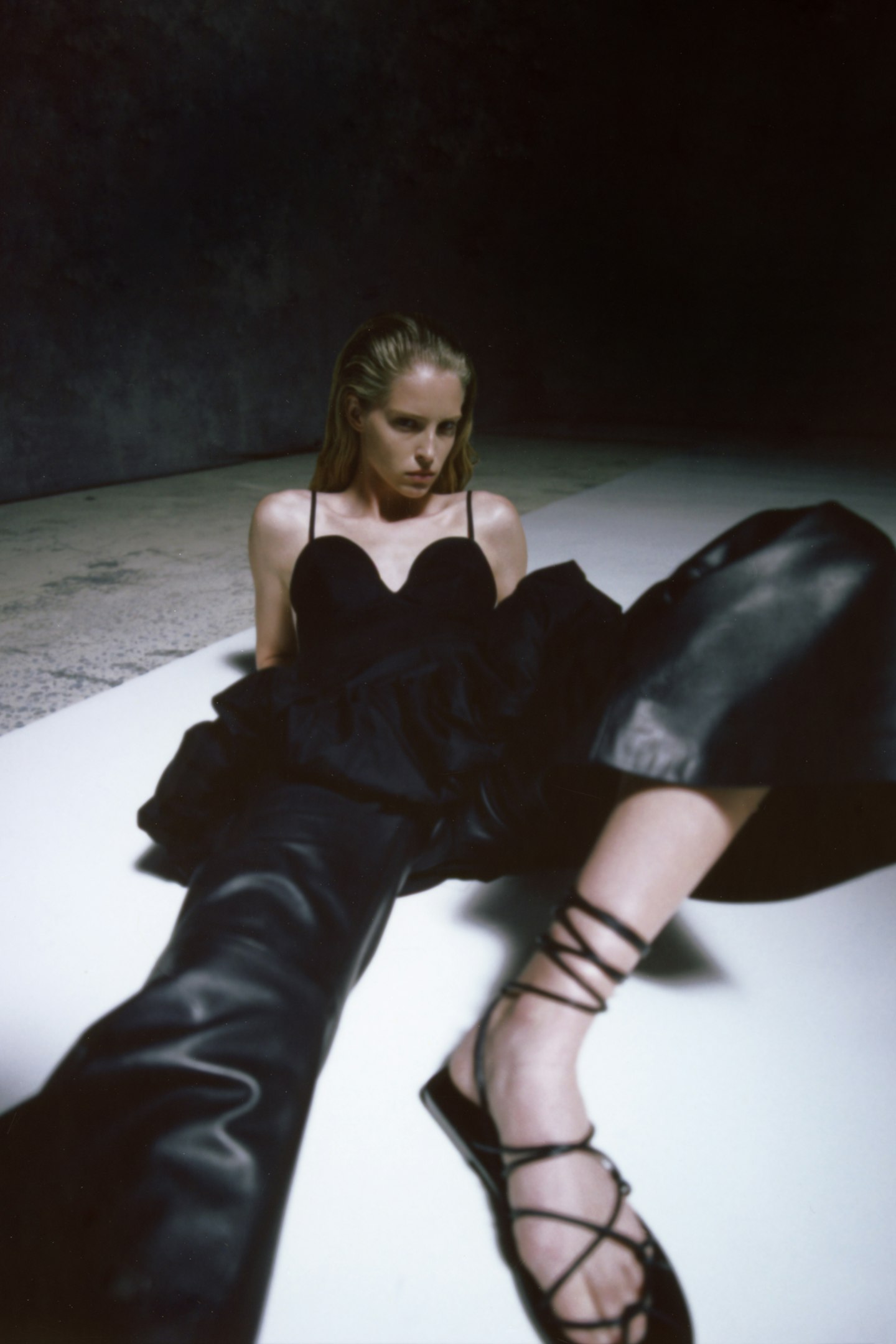 1 of 10
1 of 10Khaite
Khaite's Catherine Holstein embraced a darker demeanour for SS21, in a collection - unveiled in a short film - which explores the paradoxes of today: 'a time of doom and hope, trauma and rebirth, intolerance and endurance'. As ever, however, the knits and leather are on-point.
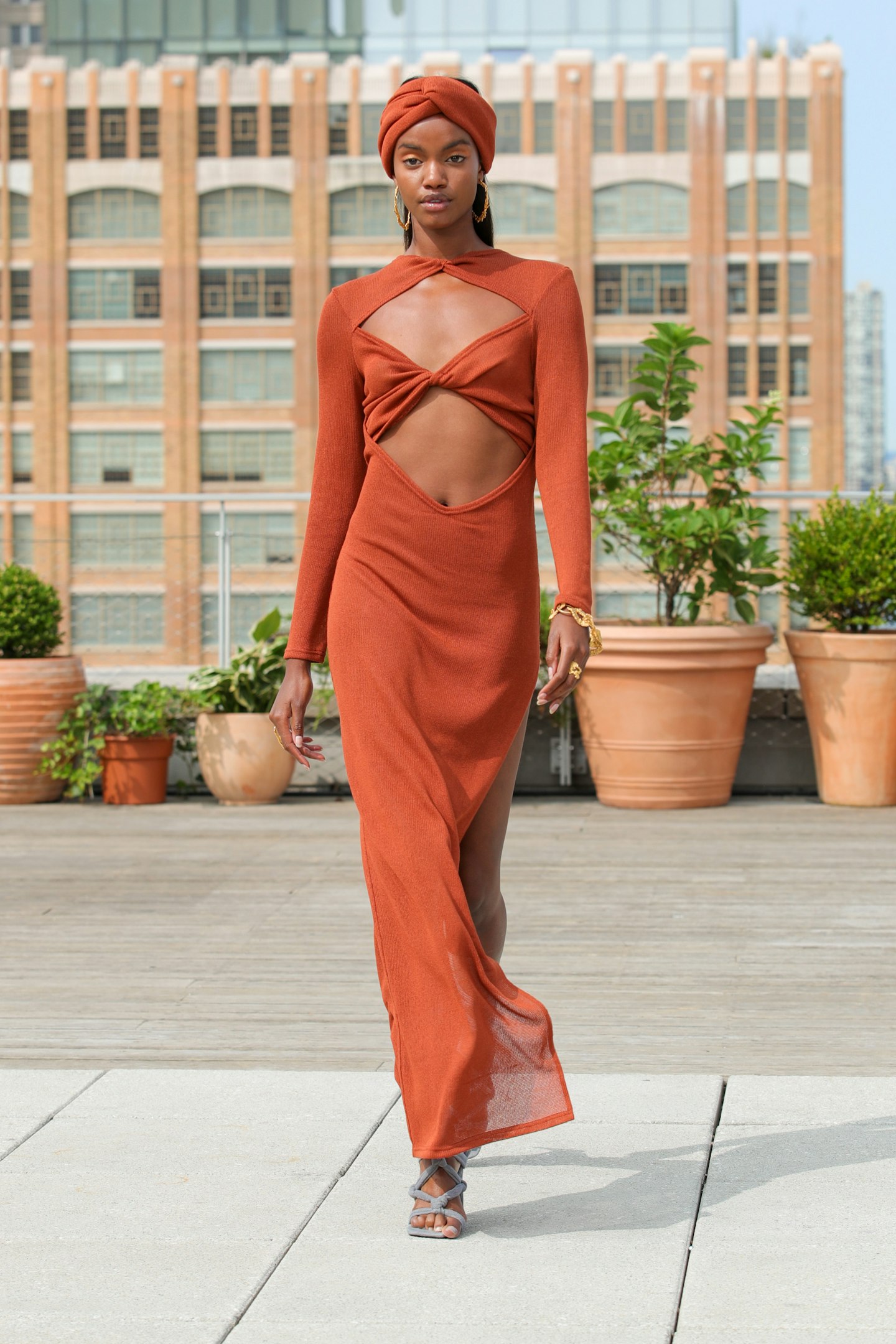 2 of 10
2 of 10Bronx & Banco
Dresses for the summer you wish you'd had.
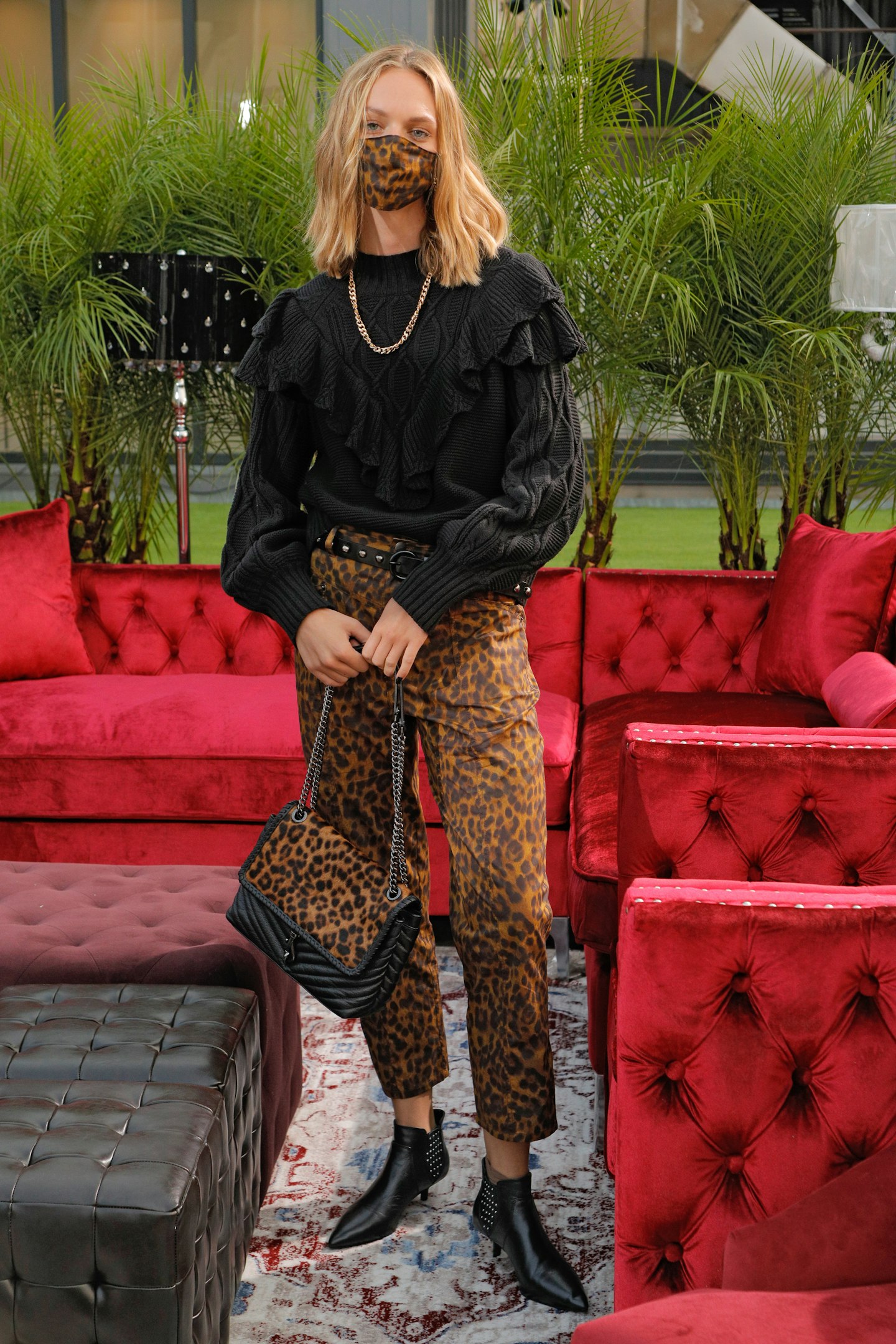 3 of 10
3 of 10Rebecca Minkoff
Rebecca Minkoff took over the rooftop of Spring Studios for her on-season Fall 2020 presentation. Guest entry time was strictly limited to staggered 15-minute intervals; models wore tough-girl leather, cosy plaid and tailoring with co-ordinating masks.
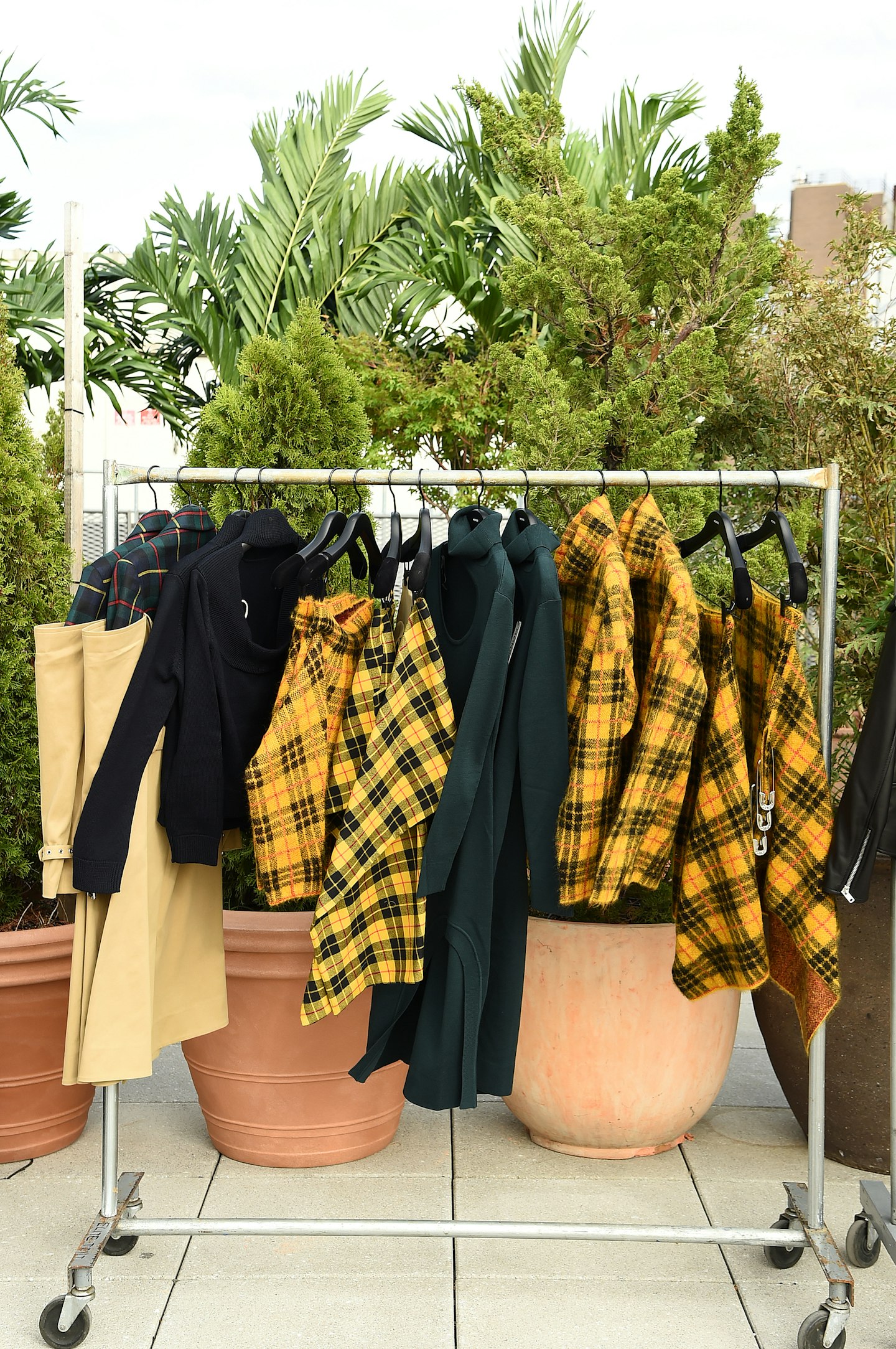 4 of 10
4 of 10MONSE
MONSE Fall/Winter 2020 Shoppable Presentation
 5 of 10
5 of 10Jason Wu
The designer loved by Michelle Obama and Diane Kruger, was inspired by Tulum, staging his outdoor show on a lushly-decorated rooftop that transformed into an urban oasis. Opened by Indya Moore, who posed with the designer wearing 'Distance Yourself From Hate' masks, the models walked along beach-style decking, while the limited number of guests watched from a front row that looked distinctly 'new normal'.
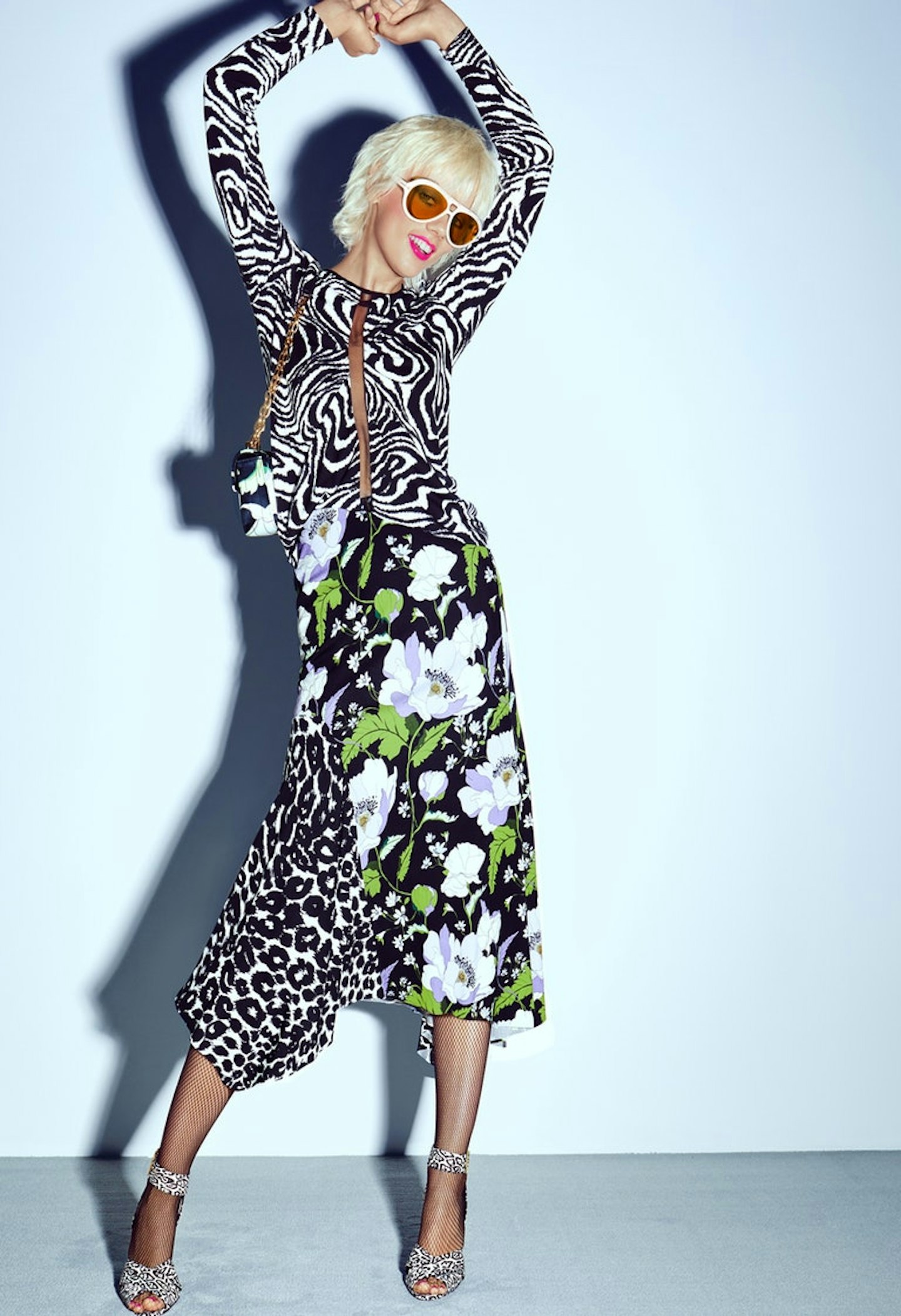 6 of 10
6 of 10Tom Ford
Because you will go out again, and when you do, Tom Ford is your man. Throwing back to '70s New York and his own '90s Gucci era, the designer and CFDA Chairman presenting a collection bursting with psychedelic florals, animal print, kaftans and slinky suiting. Those shades are made for not-so-incognito A-listers.
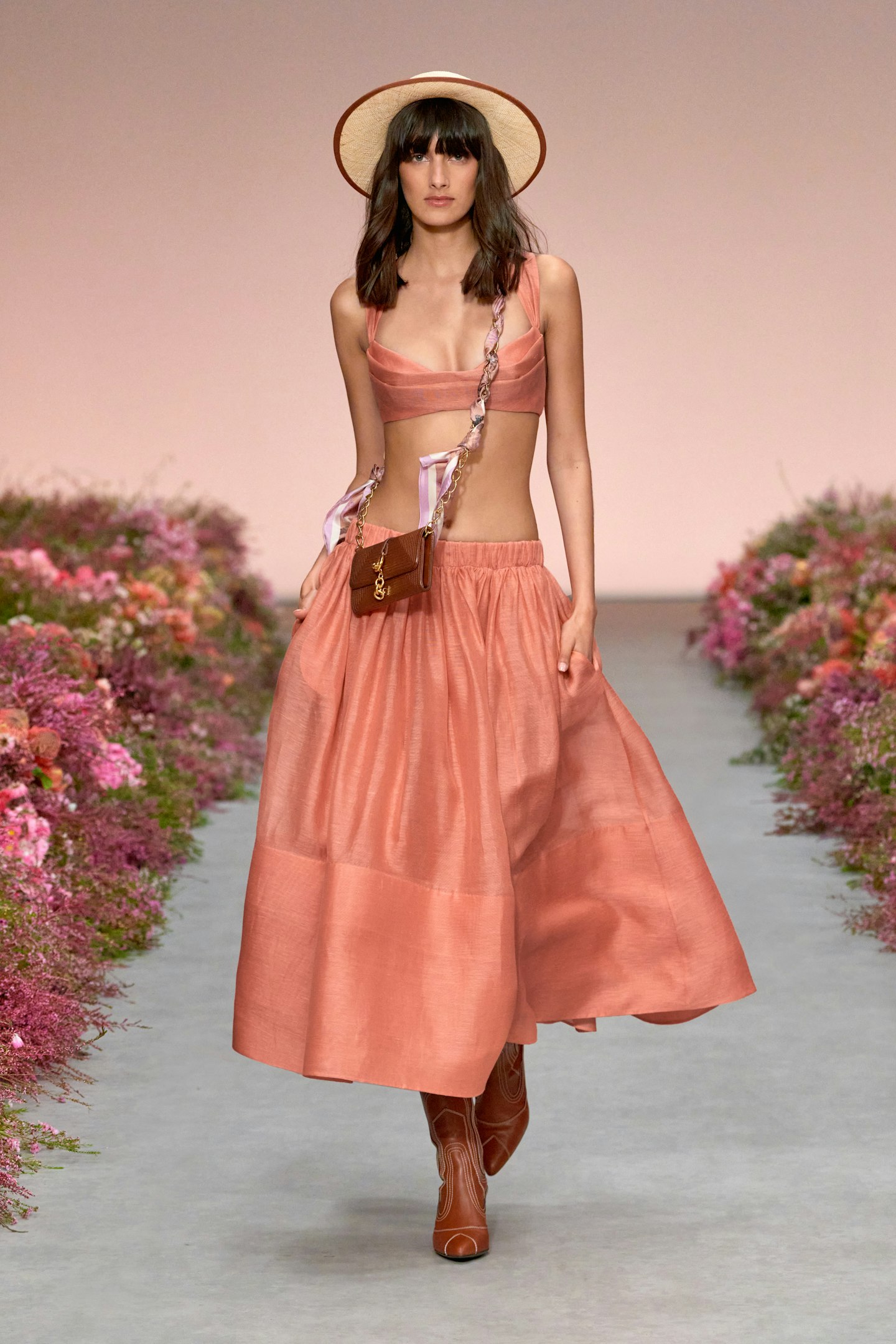 7 of 10
7 of 10Zimmermann
Nicky Zimmermann was at home in Sydney for her SS21 outing - show via a video runway - rather than at NYFW. Still, the label's luxe boho vibes were as apparent as ever. 'We think it's very important that we stick on our path, that fashion is enjoyable and fun and optimistic and joyous,' she said.
 8 of 10
8 of 10Ulla Johnson
You might not have actually been anywhere this year, but Ulla Johnson's collections always exude just-back-from-vacation good vibes. SS21's audience-less show was held at Roosevelt Island's Four Freedoms Park and starred crochet, acid-wash denim, cheerful prints and plenty of ruffles.
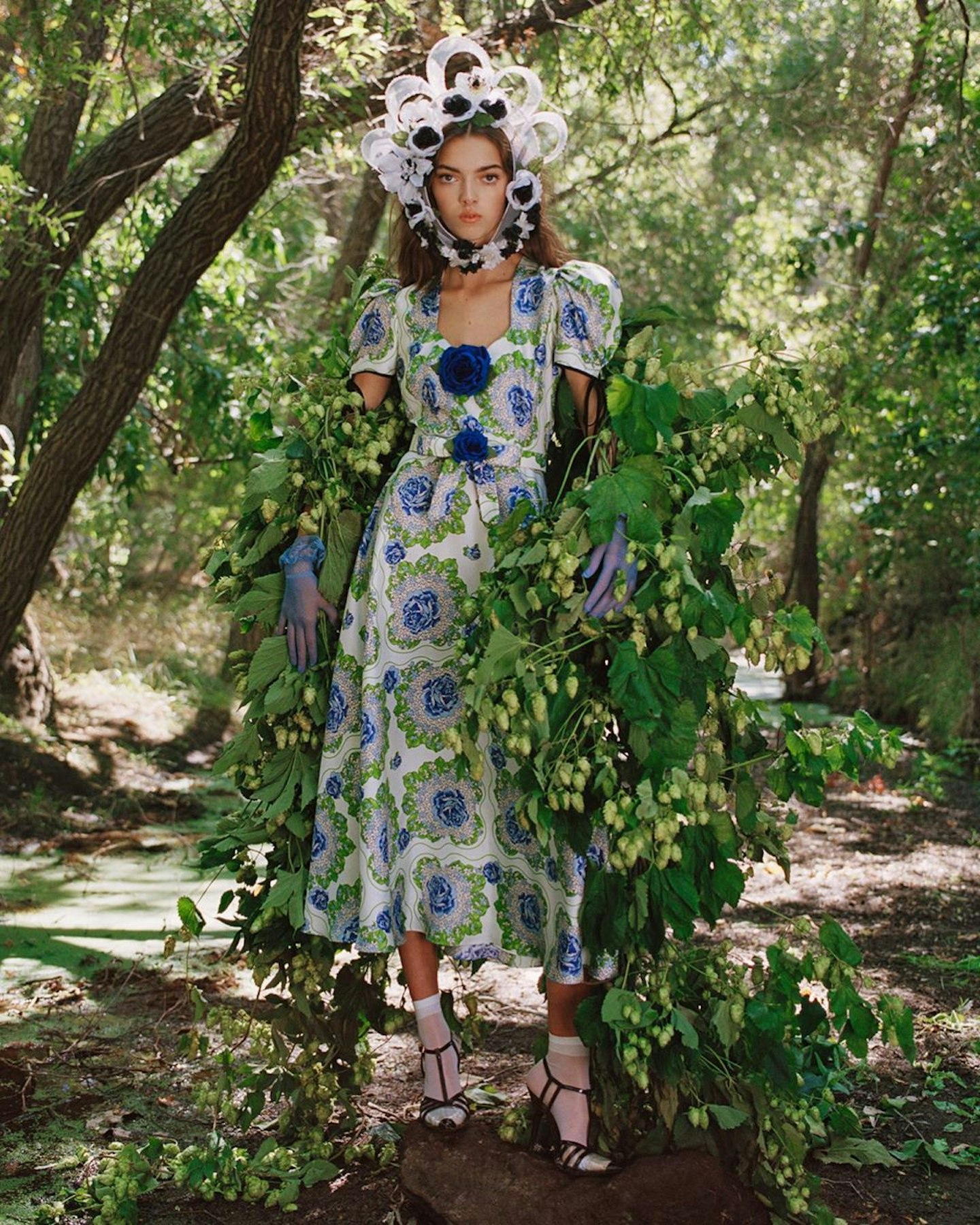 9 of 10
9 of 10Rodarte
Fashion's favourite dreamers - Rodarte's Kate and Laura Mulleavy - presented a lookbook for SS21, shot in the hills of their native California. Pyjama sets, tea dresses, and J'Aime Rodarte sweatshirts were teamed with explosive head-dresses. #WFH the Rodarte way.
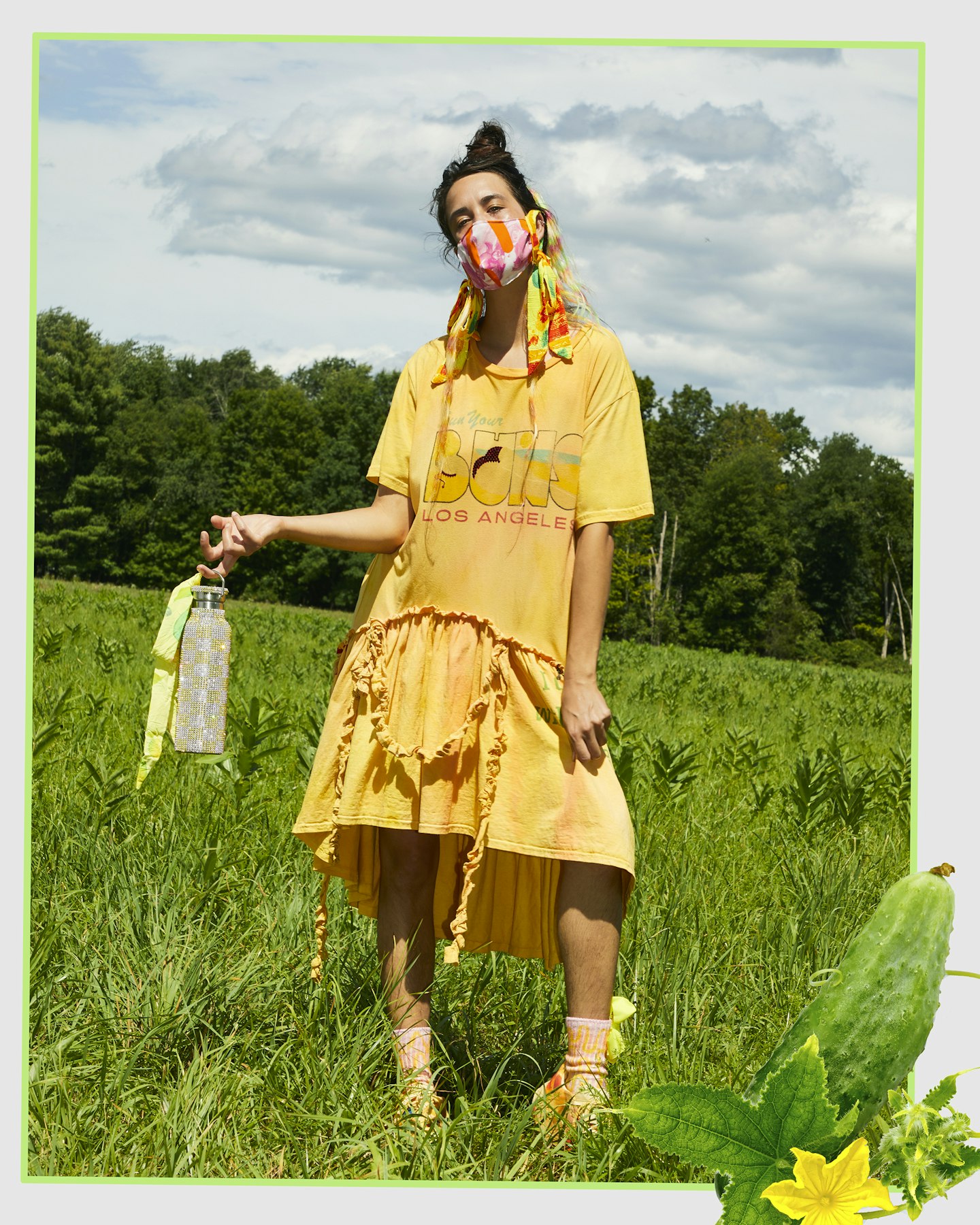 10 of 10
10 of 10Collina Strada
Sustainability isn't a trend for Hillary Taymour - it's at the heart of everything she does at Collina Strada. This season she swerved the runway for a video - entitled 'Change is Cute - in a collection that was a joyful and optimistic as ever.
